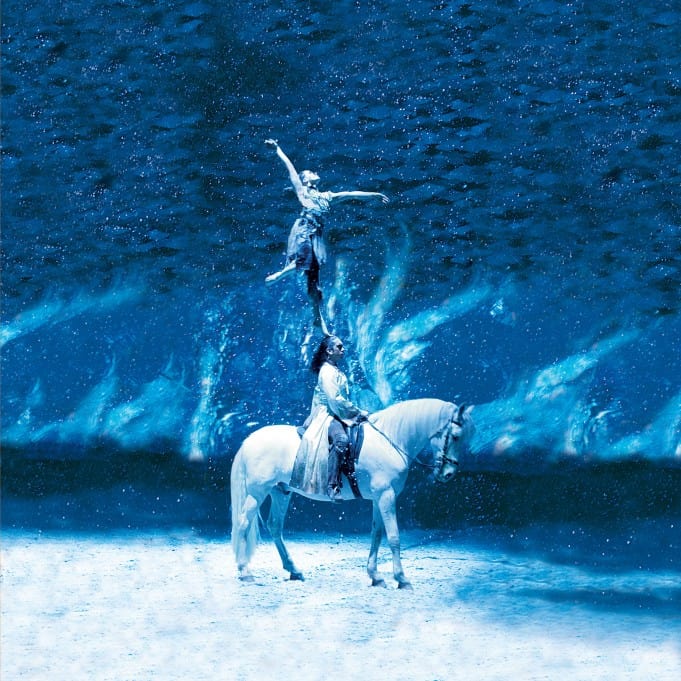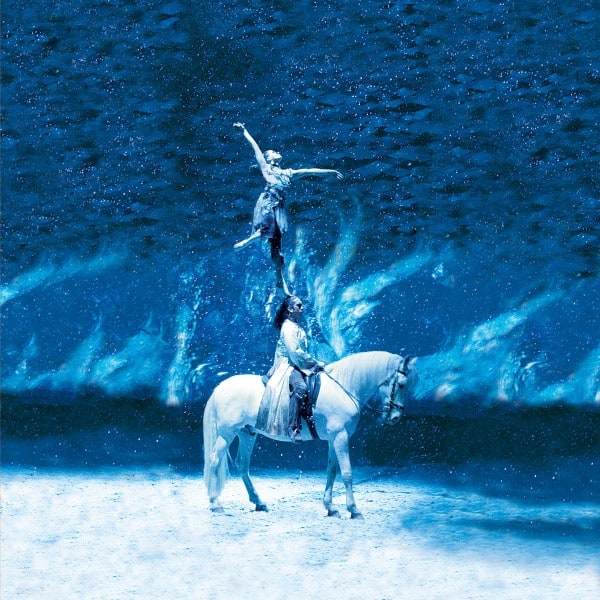
Like most things, it sounds better in French: “Un rêve de liberté sauvage / Un passage vers la complicité.” A freedom fantasy … one step towards a new complicity. So says the first page of the Cavalia program.
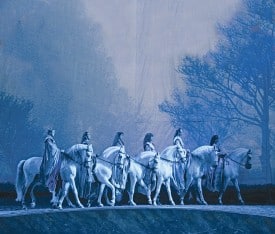
In a recent interview, Normand Latourelle expanded, explaining “it’s a way of saying to the world that peace can exist.” That’s a tall claim, and Latourelle hastens to add “not just between humans, but between humans and horses.” These remarks come close to the heart of Cavalia experience. Like everyone else, when asked about Cavalia, I throw out the usual shorthand: “kind of like Cirque du Soleil.” However, that comparison misses the mark.
For folks seeking a comparison to the stunning 2004 Cavalia shows in San Francisco and Oakland, be assured that the opening set – a bare stage with strategically placed horse toys—remains the same. Like last time, it opens with two colts gamboling across the stage. However, this time, one of the beasts didn’t approach the rocking toy horse and nudge it over with a toss of his head, an absence that was immediately noted.
The show retains the same music by Michel Cusson, as well as much of the video work and many of the acts, including the spellbinding trick riders and dressage. However, as inconceivable as it sounds, this year’s production brings a heightened athleticism. Additional bungees and flying acts put a new focus on the acrobatic elements of the show.
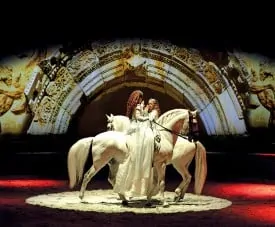
The most moving part of the evening remains the “Grande Liberté.” Just as Frédéric Pignon mesmerized audiences, letting them be the silent partner during conversations with his Lusatano, Templado, Sylvia Zerbini did something similar with her nine white Arabians. While you don’t have to be an equestrian to appreciate the exquisite control she exercised over beasts, horse people will appreciate the impossibility of splitting the herd and making them these nippy, nippy, temperamental animals go against their nature and take different paths on the run. Just as Pignon and Templado didn’t always agree on stage, Zerbini and her animals had similar differences, much to the delight of the audience.
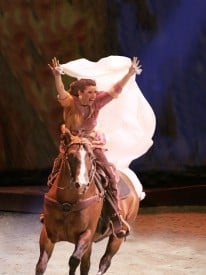
It is specifically these differences that provide the audience with a very small window into working with these magnificent animals because at its heart, flash and glitz and even trick riding aside, Cavalia is about these conversations. As Magali Delgado and Pignon explained in their book Gallop to Freedom, “I believe we can forge a new kind of relationship with a horse, one that is based on a greater degree of equality… I want to reach the stage where they don’t drive me from their space and I don’t drive them from mine… the best way to explain this belief is to talk about the liberty acts were I have to put my beliefs to the test in front of audiences. When I come into the ring with loose horses I have an idea what I think we may be doing together, but the horses may well have different ideas.”
To come full circle back to Latourelle’s original remarks, it’s that kind of heightened respect between man and animal, or indeed, between humans, that makes Cavalia – and probably world peace – possible. While Cavalia is about breathtaking feats of spellbinding athleticism, it’s also about delivering that kind of transcendent quality that is at the center of the artistic control.
As the audience filed out of huge white tent, two colts, Cavalia horses in the making, returned to the stage to gambol around. Before leaving the magic and going into the night, I took one last look around. Sure enough, one of them had nudged over the rocking horse.
Cavalia
President and Artistic Director: Normand Latourelle
5 out of 5 stars
Music composed by Michel Cusson
Concepteur Visuel: Erick Villenueve
Equestrian choreographers: Magali Delgado & Frédéric Pignon
Adjacent to ATT Park through December 12
Cavalia Preview & Interview


